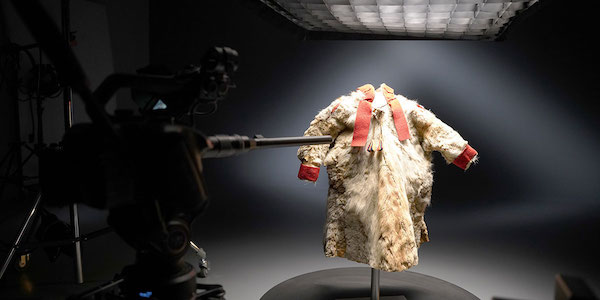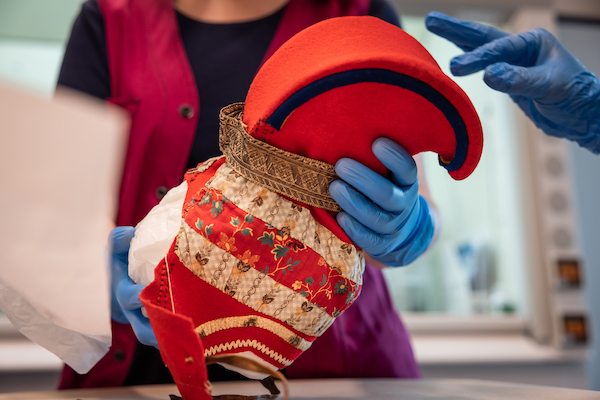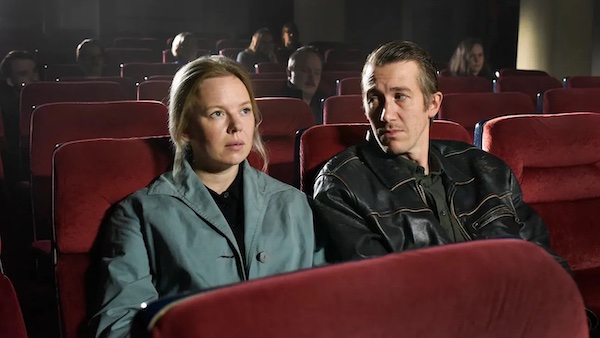Film Festival Reviews: TIFF 2023 — Human Remains in the North and More from Finland
By David D’Arcy
Four reviews of films about existence — past and present — for the marginalized in Scandinavia.

A scene from Homecoming. Photo: TIFF
Homecoming is filled with the stark hypnotic landscapes of the Sámi people, who live in the far north of Scandinavia, in the area between Norway and Russia. The documentary looks at what existence is like there for a population of 9,000 in Finland, 37,000 to 60,000 in Norway, and some 14,600 to 36,000 in Sweden. That’s not counting a special focus of this film, those buried underground.
Thousands of Sámi corpses ended up in museums. Thousands more have disappeared from burial places and have never been traced. For colonies on the borders of regimes that seized their land, it’s a common cultural crime, usually practiced in regions that Europeans plundered — not in Europe itself.
Suvi West and Anssi Kömi’s documentary was shot in Finland and just made its North American premiere in Toronto. At times the film is reportorial, at times sublimely elegiac, thanks to the stark beauty of Kömi’s images. It tracks the fate of objects that were seen as exotic specimens by the European aristocrats who collected them, initially in the 16th century, as items for then-fashionable cabinets of curiosity.
The most prized Sámi works were decorated drums, used by the Sámi in religious ceremonies. Almost all the 71 that survive are in museums around Europe today — in places like Berlin, Leipzig, Munich, and London. Four are in Sámi hands. As for the artisans who made them or those who used them, many were killed as witches in the 17th and 18th centuries because the drums were central to practices that clashed with the Christianity that the new rulers had brought north. “They were something hidden for outsiders, and very important for us,” Suvi West says of the drums in the film, “they were symbolic of the point where the destruction of our culture started.”
If this sounds like colonial plunder and theft, it was, although the Sámi are white, unlike the people in Africa, Asia, and the Americas whose objects also fill European museums.
The film presents photographs of the Sámi from the late 1800s, dressed in traditional costumes and placed in enclosures with reindeer in shows organized by private zoos in Germany. Those zoos took Sámi in costume to cafes on Berlin streets to lure in customers, who could also buy tickets to see Africans shipped in and placed in exotic settings.

Horn hat from the Sámi museum. Photo: Ville Riiko Fofonoff
Like those African populations, the Sámi themselves were “collected” after death. Corpses were often dug up and studied in research institutes charged with determining how and why they were inferior to the people ruling over them. In lands conquered by Germans (New Guinea, Namibia), the bodies of fighters killed in uprisings were sent back to Germany (or at least their skulls were), where they remain in large numbers. In Finland, where bodies and skulls were exhumed and exported to keep scholars busy, the extreme northern landscape barely regenerates from human intrusions. We are shown the holes where the Sámi bodies were unearthed. The clear suggestion: if the earth hasn’t recovered, why would the people whose ancestors were pillaged?
Another injustice of Finnish colonization of the Sámi were schools where their children were sent. This topic hit a sore point in Canada when Homecoming was screened. The mistreatment of Native children in Canadian state schools — mandated to “teach away” the vestiges of indigenous cultures — is an acknowledged abuse for which the Canadian government (and others) has admitted guilt.
So far, the filmmakers told me, Finland has issued no apology for the shameful treatment of the Sámi, although Finnish museums have cooperated in the return of objects.
Homecoming can sometimes feel like an exorcism of colonialism as we watch Sámi objects being returned and placed in Sámi institutions. With some 50,000 still in museum collections, the recovery is a work in progress, an expanding but fragmented mosaic of cultural loss and repatriation.
Other Sámi films at TIFF

A scene from Katja Gauriloff’s Je’vida. Photo: TIFF
Je’vida, directed by Katja Gauriloff. (Finland) “Je’vida” is the Sámi name that the aging protagonist stopped using long ago. She changed it to Iida when she was sent to a boarding school where Sámi children were required to assimilate. When she returns with her niece to her abandoned home in northern Finland she confronts jolting flashbacks of her youth and the pain of adjustment. Moving into old age, Iida/Je’vida tries to burn every picture and trace of her childhood. Gauriloff, born Sámi but raised speaking Finnish, filmed this feature in an austere black-and-white. The constant sight of smoke adds a distinctive visual texture. Je’vida has a subdued sense of place, with a longing for a culture that, for its protagonist, almost vanished.
The Tundra Within Me (Eallogierdu), directed by Sara Margrethe Oskal (Norway). Lena (Risten Anine Kvernmo Gaup), an artist with a small son in tow, returns to her mother’s home in the small town where she once herded reindeer so her son can learn about his background. She becomes attracted to Mahtte (Nils Ailu Kemi), a man rooted in that region who is struggling with his own herd. But there are difficulties: locals recoil at Lena’s anatomically provocative feminist art and she has a rival for Mahtte’s affections. The Tundra Within Me is an immersion in the north — its cold, its distant noises, its silences, its animals — exploring all the reasons for, and against, living there.

A scene from Aki Kaurismäki’s Fallen Leaves. Photo: TIFF
Fallen Leaves, directed by Aki Kaurismäki, should not be left out. This quiet tale is the first feature film in six years from the Finnish (not Sámi) veteran. The dialogue is monosyllabic, when people bother to talk; the plot follows a drunk laborer’s journey to sobriety and a lonely woman’s patient quest for companionship. When you’re drinking too much and all else fails, fall in love. Kaurismäki should bottle that.
David D’Arcy lives in New York. For years, he was a programmer for the Haifa International Film Festival in Israel. He writes about art for many publications, including the Art Newspaper. He produced and co-wrote the documentary Portrait of Wally (2012), about the fight over a Nazi-looted painting found at the Museum of Modern Art in Manhattan.
Tagged: "Homecoming", Aki Kaurismäki, Anssi Kömi, Je’vida, Katja Gauriloff, Sara Margrethe Oskal, Suvi West, Sámi, The Toronto International Film Festival 2023

